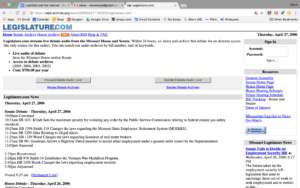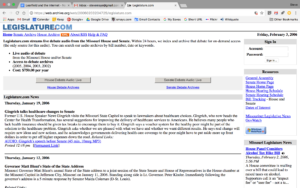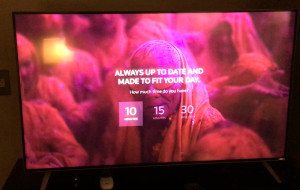Watched my (the) first installment of Vice Nightly News last night. And loved it. But not sure I can describe it. But I’ll try.
- Different look and feel. Black and white graphics. And big. More web-like than TV’ish. Faster pacing.
- No anchor. At least no “talking head” anchor. Just a normal (female) voice over the video and graphics. And the package reporters were normal people as well. Looked like real people and talked like real people. You’ll have to watch this to get what I’m trying to describe.
- Natural writing style. I noticed this immediately. Sharp contrast (for me) to the “news speak” we get from the networks and cable news.
- Watching debate #2 with Glenn Beck. One of the longer segments. A bit like a serious Stephen Colbert interview.
- No ads. Thank you, HBO. Didn’t realize how a dozen adult diapers and Flomax ads trash up a news program.
The producers didn’t just take the ancient evening news format we’ve been watching for 60 years and tweak it. They started fresh. Your grandpa ain’t gonna like Vice Nightly News. But I ain’t your grandpa.
UPDATE: Music critic Bob Lefsetz says Vice News Tonight is “the real thing.”
“The hosts were a cornucopia of sexes and ethnicities. They looked like America. Where everybody is just not an old white man. […] The networks think it’s about slickness. The local stations are a joke, peopled by bimbos, both male and female, it’s a caricature of the news. […] They humanized Glenn Beck, a seeming impossibility.”



 This is where I was going to try to describe how “apps for the TV” delivers a fundamentally different experience than the current TV model but I don’t think I’m up to the task. I know it’s a cliche but you’ll just have to play with for a bit get it. But I do have one example.
This is where I was going to try to describe how “apps for the TV” delivers a fundamentally different experience than the current TV model but I don’t think I’m up to the task. I know it’s a cliche but you’ll just have to play with for a bit get it. But I do have one example.